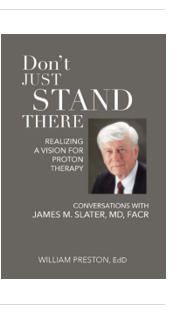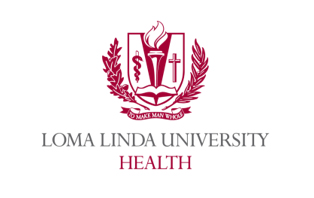
Dear Members (a note from Bob Marckini):
I vividly remember 20 years ago when we started the BOB Tales thinking maybe I’d made a mistake committing to our members that we’d publish a monthly newsletter on proton therapy, prostate cancer, and related subjects. My concern was that we’d quickly run out of things to write about; we’d be searching desperately for topics of interest; and a monthly newsletter would simply become boring.
None of those things happened. In fact, the opposite has been true. Deb and I have great difficulty choosing which of the many articles, studies, and technological breakthroughs to write about and which to ignore.
Constant Contact, our newsletter distributor – with over 600,000 customers worldwide, has told us we have the highest open-and-click-through rate of any of their customers. That tells us our members/readers are interested in what we’re reporting.
This month's BOB Tales is one of the most important and informative newsletters we’ve published. We have not one, but two significant medical breakthroughs to discuss. The first is a radically new and incredibly powerful cancer fighting tool called theranostics, something the Loma Linda University Cancer Center is on the forefront of developing and, at a rapid pace. The other is a new technology called PrecisionPoint™ Transperineal Access System. It directly addresses a major weakness in prostate cancer detection and takes dead aim on a serious problem we wrote about in last month’s BOB Tales ─ sepsis infections from biopsies.
Theranostics
Most people know we’ve been affiliated with LLUH for nearly 20 years. This relationship has been most welcomed and has provided us with financial support as well as critically important IT and administrative support. And despite this close working relationship with LLUH, our membership has always included patients treated at virtually all proton centers in the U.S. and several in Europe and Asia. One benefit of our LLUH relationship is learning firsthand of new medical technologies under development there. One such emerging technology ─ theranostics ─ is a combination of the words “therapy” and “diagnostics.”
To call this new technology exciting would be an understatement. “Mind blowing” might be a better descriptor. We all know how incredibly precise the proton beam is in targeting and destroying localized solid tumors within the body. Loma Linda University Cancer Center was at the forefront of developing this technology 30 years ago. And proton therapy continues to grow exponentially throughout the world.
But what about advanced, metastatic, and recurrent cancers located throughout the body? Today, these cancers are typically treated systemically, with hormonal therapy, chemotherapy, radiation, immunotherapy, or some combination, often with hopes of slowing disease progression, but rarely with curative intent.
What if there were way to inject a unique molecule hooked to a short-lived isotope into the body that could seek out and find multiple metastatic cancerous lesions, which are microscopic in size and undetectable by conventional imaging techniques? And, once these cancerous sites were identified, what if doctors could then attach to this molecule a special radioactive atom and send it back into the patient where it would seek out these identified cancer sites and destroy them, leaving the surrounding healthy cells alone? Mind blowing, right? Well, this technology is here, and it’s being tested. You’ll learn in this month’s BOB Tales how theranostics will have broad application for treating many cancers including prostate cancer, and likely, with a unique connection to proton therapy.
PrecisionPoint™
What an awesome network we have! Last month we wrote about serious prostate infections resulting from today’s standard transrectal prostate biopsies. We told of Lee, a BOB member who contracted sepsis from his biopsy despite the precautionary antibiotics administered before and after the procedure. He became seriously ill and wound up in the emergency room on IV antibiotics. We received lots of feedback on the article, including comments from members who also experienced serious infections from their transrectal biopsies.
One of our readers told us of a new technology that virtually eliminates the chance of sepsis, and he connected us with the inventor of the technology. This new approach to prostate biopsies, called “PrecisionPoint,” is truly a game changer, one which we learned is taking the world by storm. Read about PrecisionPoint in this month’s newsletter.
In addition to these issues, in this month’s BOB Tales you’ll read about how our incredible network is reaching out to help promote proton therapy in two states by providing both written and in-person testimony at public hearings in support of proton center development. You’ll also read about some interesting perspectives on COVID-19 with respect to vitamin D, obesity, and reactions to vaccines.
As always, we welcome and encourage your feedback. Please send an email to [email protected].
To print the BOB Tales newsletter or view the newsletter with a larger font size, click here for the PDF file.
In This Issue:
- Theranostics ─ A Bold New Tool for Fighting Cancer
- Transperineal vs. Transrectal Prostate Biopsy: Significant New Developments
- Flashback: Statins May Help Prevent Advanced Prostate Cancer
- COVID-19, Vitamin D and Obesity
- COVID-19 Update: A Reaction to Vaccine Means It’s Working … Right?

Theranostics ─ A Bold New Tool for Fighting Cancer
As mentioned in our opening memo, theranostics is a breakthrough technology you’ll be hearing a lot about in the future. Loma Linda University Health (LLUH) is collaborating with BAMF Health on this venture. Both institutions are in the process of establishing theranostics centers at their respective headquarters. Both LLUH and BAMF are already collaborating on developing new theranostic agents.
 The following article was written for the BOB Tales by Mark Reeves, MD, PhD, Cancer Center Director at LLUH. Dr. Reeves is in the process of establishing a Comprehensive Cancer Center at Loma Linda, designated by the National Cancer Institute. One of their initiatives is to pursue and develop this new technology.
The following article was written for the BOB Tales by Mark Reeves, MD, PhD, Cancer Center Director at LLUH. Dr. Reeves is in the process of establishing a Comprehensive Cancer Center at Loma Linda, designated by the National Cancer Institute. One of their initiatives is to pursue and develop this new technology.
The article is somewhat technical for many of our members, but the importance and significance of this new technology is clearly evident.
We encourage you to carefully read this important article and consider the implications of using this breakthrough technology for treating advanced, metastatic prostate cancer as well as a whole range of other cancers previously untreatable with today’s technologies. This new technology is totally consistent with the proton therapy concept of destroying disease while minimizing damage to surrounding healthy tissue. And you’ll see in this article how theranostics and proton therapy can, and will be, synergistic technologies.
This is truly exciting news.
Theranostics
By Mark Reeves, MD, PhD, Cancer Center Director, LLUH
Theranostics is an emerging field that combines molecular therapies (therapy) and paired molecular targeted imaging (diagnostics). In oncology, a molecule that binds to a tumor is first used to image the cancer, and then that same molecule is used to destroy the cancer. This approach is being used to transform many fields in medicine, especially neurosciences and oncology. It has the promise of moving oncology from “trial-and-error medicine” to “precision medicine.”
An Example
Theranostics is already transforming the diagnosis and treatment of rare, difficult-to-treat neuroendocrine tumors. We have known for a long time that they universally bind to a molecule called “somatostatin.” Based on this, a version of somatostatin called “DOTATATE” is connected to diagnostic radioisotopes (68Ga) that can be detected using positron emission tomography (PET/CT). Thus, 68Ga-DOTATATE is injected into a patient with a neuroendocrine tumor, and a very specific PET/CT is obtained that finds both the primary tumor and sites of spread that can’t be seen on typical scans.
Then, after all the sites of tumor have been identified, the same molecule (DOTATATE) is hooked to a therapeutic isotope (177Lu) that creates lethal radiation in the local area where the DOTATATE binds. 177Lu-DOTATATE is infused into the patient; it seeks out the sites of cancer; and the 177Lu destroys it with localized radiation. It can be thought of as a system that seeks (68Ga-DOTATATE) and precisely destroys (177Lu-DOTATATE) the cancer, leaving other tissue alone.
Scratching the Surface
This is good, but neuroendocrine tumors are rare. Can theranostics be used for more common cancers such as prostate cancer? Yes.
The most well-known example of this is prostate-specific membrane antigen (PSMA). PSMA is a glycoprotein that is highly expressed in prostate cancers. More important, it is more highly expressed in high-risk and metastatic prostate cancer.
PSMA is being developed as a theranostic agent to detect and treat prostate cancer. The data supporting 68Ga-PSMA-11 (a ligand that binds to PSMA) PET/CT scanning for prostate cancer are compelling. PSMA PET/CT is far more sensitive than bone scanning or fluciclovine PET/CT, and in one study changed treatment decisions in 62 percent of patients with biochemically recurrent prostate cancer. PSMA is also being developed as a paired therapy (eg: 177Lu-PSMA-11) for prostate cancer. Early data are showing significant responses to PSMA therapy even in heavily pre-treated patients with widely metastatic disease. While not available outside of a clinical trial in the U.S., it is available in Europe.
Development of New Compounds
Because not every prostate cancer binds PSMA, the development of new compounds that bind to prostate and other cancers is critical. In the new Molecular Imaging and Therapeutics Research Program (MITRP) in the LLU Cancer Center (directed by Frankis Almaguel, MD, PhD), we have used boron chemistry to synthesize and develop molecules that bind to a number of prostate and other cancer biomarkers (eg: enolase, FAPI, MetAP2, etc). These molecules are then developed into theranostic pairs to image and treat cancer.
A New Theranostics Center
To leverage this theranostic approach to precision cancer therapy, Loma Linda University Cancer Center is developing a Theranostics Center as part of the MITRP in collaboration with BAMF Health. “We are excited to partner with LLUCC to bring this futuristic but real technology to the patients in a high speed manner. This partnership will make a significant impact to the future of cancer care with a strong research capability in proton therapy, health disparity, and other cancer related fields within LLU community,” said Dr. Anthony Chang, founder and CEO of BAMF Health. The Theranostics Center is being developed in three phases:
- Phase 1, which went live March 1, is a consultation clinic that makes theranostic consultations available to patients under the direction of Dr. Almaguel.
- Phase 2, which we anticipate being active in 2022, will create a dedicated theranostics clinic, which will contain both dedicated molecular imaging facilities and a precision therapy and infusion clinic. It will allow us to provide both standard and experimental theranostic imaging and treatment.
- Phase 3, which is planned to be active in 2-3 years, will leverage our existing cyclotron capabilities to create a full theranostics program. This will provide expanded molecular imaging and precision therapy clinics, full synthetic radiopharmacy capabilities, synthesis and translation of novel molecules into early-phase clinical theranostics trials, and the utilization of artificial intelligence to provide more efficient and precise therapies. Particularly exciting about this program is the full translational ability to conceptualize and synthesize compounds in the chemistry lab, develop them in sophisticated animal models, and bring them to early phase human use in a short period.

Theranostics and Proton Therapy
Adding further to the excitement about theranostics is the obvious connection to proton therapy and other particle therapies such as boron neutron-capture therapy (BNCT). We have already started integrating PSMA theranostics into proton therapy planning, and will combine these modalities in future clinical trials. Imagine for a moment, patients newly diagnosed with prostate cancer receiving theranostic molecular imaging with PSMA or other newer compounds and using these results to decide on the best approach to treatment. For instance, if the theranostic scan showed disease only in the prostate, then proton therapy might be chosen as the best treatment approach. Better yet, if the scan showed that only a specific part of the prostate had disease, then only that part of the prostate might be treated with proton therapy, potentially further lowering side effects. If the scan showed minimal distant metastatic disease and significant disease in the prostate, then the best approach might be up-front therapy with the theranostic agent, which would seek out and destroy the metastatic sites of disease. Proton radiation might then be used to treat any residual disease in the prostate.
All these approaches obviously need to be developed and tested in clinical trials, and there are many other potential synergies between theranostics and particle therapy. While this will require time and investment of resources, we believe that the co-location of theranostics and proton centers at LLUH make it the obvious place to develop and deliver these precision cancer treatment approaches.
► BOB Comment: We reached out to Dr. Reeves and asked for more details about the timing of implementation of the theranostics program at Loma Linda that may benefit BOB members with recurrent cancer. He said, “We hope to have our theranostics center up and running and able to provide this therapy in 2022. Patients can be seen before then, however, to determine if they’re candidates for PSMA therapy.”![]()
![]()
Transperineal vs. Transrectal Prostate Biopsy: Significant New Developments
Last month’s story about BOB member “Lee” shined a light on a serious problem associated with the standard transrectal biopsy procedure routinely performed around the world every day. This prompted several emails from members who had similar experiences. One informed us of a new and relatively unknown technology that virtually eliminates the sepsis infection problem. This piqued our interest, so we followed up on the lead. And we’re glad we did.
Our research revealed that about two million Americn men undergo conventional transrectal biopsies each year and up to 2,000 of them die from the procedure, mostly from sepsis infections, not to mention bleeding complications associated with the procedure. Hospitalization for sepsis costs between $9,000 and $19,000 per patient according to Richard Szabo, MD at the University of California, Irvine.
The Journal of Endourology reports “many centers around the world have adopted fTP-Bx (“free-hand” transperineal prostate biopsy) because it virtually eliminates sepsis, may improve detection rates of clinically significant prostate caner, and can be easily integrated into a normal clinic workflow using only local anesthesia.” The journal also reports that if all urologists in the U.S. abandoned transrectal biopsies for transperineal biopsies, “the potential savings in healthcare costs of complications would be significant.”
The PrecisionPoint™ Transperineal Biopsy
Deb and Bob met via Zoom with Dr. Matthew Allaway, a urologist and inventor of the PrecisionPoint™ transperineal biopsy device and procedure, along with Ken Knudson, CEO of his new company, Perineologic, and Evan Brasington, CCO. Following is what we learned from the meeting.
Over the past 18 years, Dr. Allaway has been caring for men, women, and children with a myriad of urologic conditions in the small town of Cumberland, MD. “As a urologist,” he said, “I treat a wide spectrum of conditions that span from urinary infections and kidney stones, to cancers of the kidney, bladder, and prostate using modern advancements to improve outcomes. I’m committed to contemporary screening methods for prostate cancer and the potential benefits of early diagnosis and patient-directed treatments.”
The conflict he struggled with was accepting the known complications and limitations with the most important first step in the treatment of prostate cancer, the prostate biopsy. Once prostate cancer is suspected, either through an increase in PSA and/or confirmatory prostate MRI, a biopsy of the prostate is required to establish the diagnosis of prostate cancer. Almost two million prostate biopsies are performed in the U.S. each year. Dr. Allaway’s research and efforts have been devoted to developing a better, safer biopsy for prostate cancer.
The Standard Biopsy and Associated Risks
The current standard of care for a prostate biopsy is a transrectal ultrasound-guided (TRUS) biopsy. It requires the urologist to take samples of the prostate by passing a needle through the rectum of the patient in order to access the prostate. This procedure runs the risk of infecting the patient with fecal matter introduced into the prostate with each pass of the biopsy needle. Generally, patients are given antibiotics to reduce this risk, but due to societal overuse of antibiotics, up to 25 percent of bacteria are resistant to the antibiotics given.
The trans-rectal biopsy typically requires 12 needle sticks through the rectum to access the prostate for biopsy samples. Dr. Allaway said, approximately 1-6 percent of patients worldwide develop a serious sepsis infection requiring hospitalization. Some publications place the sepsis infection rates higher. One article from the Sperling Prostate Center reported TRUS biopsy caused infections as high as 7.2 percent. Another study published in the U.S. National Library of Medicine reported urosepsis following TRUS prostate biopsy to be even higher. “Sepsis is a serious complication of infection and between 12-25 percent of cases of sepsis are fatal,” said Dr. Allaway. “Other serious complications of the transrectal biopsy are injury to blood vessels of the rectal wall resulting in rectal bleeding. Less serious risks include temporary inability to urinate, pain, and erectile dysfunction. I decided these risks were unacceptable for my patients,” he told us.
His second concern with the transrectal approach was the limitations in sampling the entire prostate. “Up to 30 percent of cancer is either not identified or mis-classified,” said Dr. Allaway, “Missing the cancer often leads to repeated biopsies in order to capture the cancer, exposing the patient once again to the complications. Misclassification could result in the patient being treated as having low-risk disease, when in fact, they harbor higher-risk disease that will need active treatment.”
A Better, Safer Biopsy
To address these risks, Dr. Allaway developed a device and surgical method called the PrecisionPoint™ Transperineal Access System (PPTAS) which allows the urologist to perform the prostate biopsy in a revolutionary way that eliminates the complications and risks associated with the transrectal method of biopsy. “This system uses a safer route for taking samples of the prostate by passing an access needle through the perineum or taint. From there, the prostate is sampled thoroughly with the patient experiencing only two needle sticks and little or no discomfort,” said Dr. Allaway. “The risk of infection using this approach is reduced to nearly zero and the complications of rectal injury are eliminated.”
 While his major focus was to eliminate the risk of infection, another equally important benefit of this approach presented itself. That benefit included better access to difficult-to-reach parts of the prostate gland during the biopsy, resulting in nearly 30 percent better cancer detection rates. “We’ve treated more than 3,000 patients in the Cumberland area with this method and have had patients visit us from around the world to have their biopsies in our clinic.”
While his major focus was to eliminate the risk of infection, another equally important benefit of this approach presented itself. That benefit included better access to difficult-to-reach parts of the prostate gland during the biopsy, resulting in nearly 30 percent better cancer detection rates. “We’ve treated more than 3,000 patients in the Cumberland area with this method and have had patients visit us from around the world to have their biopsies in our clinic.”
The New Standard of Care?
The revolutionary PrecisionPoint method is quickly being adopted around the world. Twelve of the 15 U.S. News and World Report’s top-rated urology centers are using the PrecisionPoint Transperineal Access System. Additionally, 12 countries outside the U.S. are using the device and method. Many of the countries have made the commitment to eliminate the transrectal biopsy and use the PrecisionPoint biopsy as the standard of care.
“We are working to make the PrecisionPoint biopsy the standard of care throughout the U.S. so that all men can have the benefits of a better, safer biopsy and relegate the trans-rectal biopsy to the medical archives,” Dr. Allaway said. “We’re expecting more than 40,000 prostate biopsies in the U.S. will use PPTAS technology in 2021.”
Educating Urologists and Patients
Men and their family members are becoming aware of the options and are requesting the transperineal approach. Unfortunately, over 90 percent of biopsies in the U.S. are still performed using the transrectal pathway. Many urologists simply are not aware of this transperineal option and therefore patients are not informed of their options. Outside the U.S., the transrectal method is being actively phased out and the European Association of Urologists have changed their guidelines, recommending that the transperineal biopsy be offered.
“We intend to continue our mission by training urologists on the PPTAS, educating patients and working with insurance carriers, Medicare, and the American Urologic Association to offer the very best and safest biopsy.”
Transperineal biopsies are not new. They have been done before, but the procedure involved the use of a stepper device to penetrate the perineum 18 to 24 times and it required general anesthesia. And while this procedure resulted in far fewer infections, it was expensive, time consuming and therefore never gained wide popularity and use.
The PrecisionPoint technique uses a new device that is relatively simple to use, requires only two punctures of the perineum for multiple biopsy samples and can be done under local anesthesia. The procedure is done in roughly the same amount of time as the TRUS procedure and costs about the same with the addition of a $200 disposable PPTAS device.
One urologist we spoke with about the PrecisionPoint transperineal biopsy called it a “game changer.”

Connecticut Members Stepped Up!
Last month we thanked our Colorado members who submitted their personal accounts of proton treatment in support of state legislation to provide greater access to proton therapy for its residents. Many not only volunteered to share their stories, they offered to testify in favor of the bill at a committee meeting. Looks like our Connecticut members are also willing to lend a hand, and we couldn’t be prouder!
We recently received a request from the team leading the effort to build a proton center in Danbury, CT. They asked for letters of support from former proton patients who live in the greater Danbury area. We sorted our member list and asked this group to provide their personal testimonials of treatment and life after treatment, which they did willingly. Many also agreed to testify at the public hearing which was held April 1. Bob and Deb also gave their testimonies at the meeting with the Office of Health Strategy (OHS). During the session, the team leader read excerpts from compelling testimonies provided by our members. That afternoon, many of our members also gave verbal testimonies.
Thank you, members, for your continuing support. The Colorado state legislative staff and the Danbury proton team both told us they’d never experienced such willingness to help from a group of former cancer patients!
We don’t know if the Danbury project is approved, but the team is optimistic, telling us the OHS meeting/hearing couldn’t have gone better. In the meantime, check out this short video on the exterior and interior of the proposed Danbury proton facility.

We’ve been producing BOB Tales newsletters monthly for more than 20 years. During this time there have been articles that many new members haven’t seen, and some older members may have forgotten. So, we periodically re-run articles from past newsletters. The following is from August 2006.
Statins May Help Prevent Advanced Prostate Cancer
In a 10-year study of more than 30,000 health professionals, researchers at Johns Hopkins and Harvard found that the longer men take cholesterol-lowering drugs such as statins, the far less likely they are to develop advanced prostate cancer. Men who took cholesterol-lowering medications, as opposed to those not taking them, had half the risk of eventually developing advanced prostate cancers.... And the longer men used cholesterol-lowering drugs, the lower their risk, according to the study.
“We found that statin-takers cut their risk for advanced disease in half,” says Elizabeth Platz, at the Johns Hopkins Cancer Center. Although earlier, smaller studies have linked the use of statins to a lower risk of prostate and other cancers, such as breast and colon, this is the first to tie risk reduction to prostate cancer stage while tracking the medication use before study participants got cancer. Still, the researchers caution that data are not conclusive enough to warrant prescribing the drug to reduce cancer risk alone because many questions still linger, such as how they might contribute to delaying the cancer process more effectively than non-statins.
“Additional large studies may help confirm these results, but we also have some very important questions lingering as to which biochemical processes may link statins and reduced prostate cancer development,” says Platz. “Instead of preventing cancer, statins might work by stalling a tumor already in the prostate, helping to ensure that it doesn’t get worse.”

Don’t Just Stand There
In an effort to boost funding for basic and clinical proton therapy research on prostate cancer, pancreatic cancer, liver cancer, breast cancer, and more, we asked our members to donate $100 (or more) to Loma Linda University Cancer Center. In return, they’d receive an advance copy of Dr. William Preston’s book, Don’t Just Stand There – Realizing a Vision for Proton Therapy: Conversations with James M. Slater, MD, FACR. The response so far has been phenomenal. Thank you to all who’ve requested a copy.
 There are still books left! So, if you’d like a pre-published copy of this awesome book that likely won’t be available to the public until next year, please send a check for $100 or more, payable to “Loma Linda University Proton Cancer Research” and mail it to:
There are still books left! So, if you’d like a pre-published copy of this awesome book that likely won’t be available to the public until next year, please send a check for $100 or more, payable to “Loma Linda University Proton Cancer Research” and mail it to:
Loma Linda University Health ● Office of Philanthropy ● PO Box 2000 ● Loma Linda, CA 92354
Please notify Deb Hickey at [email protected] that you’ve sent in your check and your book will be mailed immediately.
This book, which contains high-quality color images and illustrations, is not only about Dr. Slater’s quest to create the world’s first hospital-based proton treatment center, it’s also a teaching guide. As the Proton Treatment & Research Center at Loma Linda was such an immense endeavor, Dr. Slater wondered if the aspects of conceiving, planning, and orchestrating such a project, among others he undertook, might be instructive to others. Over the years, he’d also met people in all walks of life, many of whom had dealt with large and complex problems. He was struck by some of the stories they told about their work. And although the fields or disciplines usually had nothing to do with medicine, many experiences were similar. And so, he kept this in mind while he worked on the book with Dr. Preston.
We’re sure you’ll thoroughly enjoy the book and we know it will occupy a place of honor in your home. And, you’ll be helping to fund basic and clinical proton research on prostate cancer, pancreatic cancer, liver cancer, breast cancer, and much more with your tax-deductible gift. Thank you!
Other Ways to Give
- Donate to proton research online.
- Write a check to LLUCC Proton (Put “Marckini Chair” on the memo line) and mail to LLUH, Office of Philanthropy P.O. Box 2000, Loma Linda, CA 92354.
- Make an unrestricted gift (put “unrestricted” on memo line) so LLUH can use it where it’s needed most.
- Call Regina Joseph at 909-558-5010 to donate over the phone and/or to inquire about naming opportunities.
![]()
COVID-19, Vitamin D and Obesity
Dr. Ryan Cole, a board-certified dermatopathologist, is CEO and medical director of Cole Diagnostics in Idaho. He’s also Mayo Clinic trained, board-certified in anatomic and clinical pathology, with expertise in immunology and virology, and has spent much time studying COVID-19.
The Idaho Freedom Foundation sponsored a presentation by Dr. Cole where he talked about the science of COVID-19 and what the science and the data tell us.
Dr. Cole reports that while COVID-19 was a pandemic, it’s now an endemic in the state of Idaho and in most of the rest of our nation, suggesting the virus’ spread is much more confined than in the recent past. The highest risk factors for COVID, he indicated, have been advanced age, obesity, and – surprisingly – low vitamin D.
 Vitamin D plays a crucial role in our health, he believes. “There’s no such thing as a flu and cold ‘season.’ There’s only a low vitamin D season,” Dr. Cole says. “Every cell in our body has a vitamin D receptor in the nucleus. And he says that vitamin D is the master key to our immune health. He further states that if you are in the mid-level of the normal vitamin D range (20 – 100ng/mL) you can’t develop a “cytokine storm,” and, therefore, he believes you can’t die from COVID.
Vitamin D plays a crucial role in our health, he believes. “There’s no such thing as a flu and cold ‘season.’ There’s only a low vitamin D season,” Dr. Cole says. “Every cell in our body has a vitamin D receptor in the nucleus. And he says that vitamin D is the master key to our immune health. He further states that if you are in the mid-level of the normal vitamin D range (20 – 100ng/mL) you can’t develop a “cytokine storm,” and, therefore, he believes you can’t die from COVID.
Dr. Cole says that 70 percent of the world is vitamin D deficient, including Americans. And, if you’re vitamin D deficient, you’re immune suppressed and more susceptible to the common cold, flu, coronavirus, and many other illnesses. “The best mask of all is a healthy immune system,” he says.
How do we get vitamin D? Sunshine. We synthesize it through our skin. But, above the 35th parallel we can’t naturally make D for the four to five months of fall and winter. This suggests that those of us who live above Southern California, Arizona, Texas, Oklahoma, Alabama, and Georgia should consider taking vitamin D supplements from October through March, Dr. Cole says. Dr. Anthony Fauci, director of the U.S. National Institute of Infectious Diseases, commented at one of his press conferences that he takes 8,000 to 9,000 IU of vitamin per day in the winter.
In concluding his comments, he showed a summary slide with his four-point public health message. And these four points were:
- Vitamin D
- Vitamin D
- Vitamin D
- Decrease obesity (cut sugar, processed foods, carbohydrates). Obesity is an inflammatory condition and predisposes and causes countless diseases.
There are clearly many other things we can and should pay attention to in maintaining our health and strengthening our immune system, but Dr. Cole was quite clear on the importance of vitamin D to our general health.
As with all other medications and supplements, we shouldn’t begin taking them without consulting our primary care physician.
COVID-19 Update: A Reaction to Vaccine Means It’s Working … Right?
 Wrong, says Dr. Keith Roach, Weill Cornell Medicine and syndicated newspaper columnist. Some people believe that a sore arm and fever from the first or second vaccine shot means the vaccine is working. Similarly, some fear if they have no reaction, the vaccine isn’t working. In his April 6, 2021 column, Dr. Roach explains that whether or not people have any side effects, they’re protected when injected with today’s highly effective COVID vaccines.
Wrong, says Dr. Keith Roach, Weill Cornell Medicine and syndicated newspaper columnist. Some people believe that a sore arm and fever from the first or second vaccine shot means the vaccine is working. Similarly, some fear if they have no reaction, the vaccine isn’t working. In his April 6, 2021 column, Dr. Roach explains that whether or not people have any side effects, they’re protected when injected with today’s highly effective COVID vaccines.
People who have a history of COVID-19 infection may be more likely to have side effects, such as fever or fatigue, according to Roach. Also, he feels people who have strong reactions to the vaccine may be those who were at risk for severe COVID-19 complications.
“Speculation aside,” he says, “vaccination is effective whether a person has side effects or not.”

 You Can Beat Prostate Cancer: And You Don’t Need Surgery to Do It – Second Edition
You Can Beat Prostate Cancer: And You Don’t Need Surgery to Do It – Second Edition
Another proton center contacted us last month to purchase Bob’s book in bulk and to send to patients who inquire about proton therapy for prostate cancer. We regularly hear from patients who’ve received the book from proton centers and, after reading it, decided to have proton therapy. Nothing makes us happier.
As of this writing, we are once again, in the No. 1 spot out of 4,000 books on prostate cancer on Amazon.
There are several endorsements at the front of Bob’s new edition. Here’s one written by Carl Rossi, M.D., Medical Director, California Protons:
As is true of many adult and pediatric cancers, there are [fortunately!] many options when it comes to treating prostate cancer and in my clinical experience, I routinely find that the most difficult decision patients face is which one to choose. Beginning with the publication of his first edition of “You Can Beat Prostate Cancer,” and even more so new with his update, Bob Marckini provides a readable, factual guide for patients and their loved ones who are faced with this daunting but curable diagnosis, written in a style which is blessedly free of the jargon and acronyms which so often dominate the medical literature. It’s an excellent resource which I recommend unequivocally.
Did you find Bob's new book helpful?
Please write a review on Amazon.
We’re happy to discount books in quantity (minimum 20) to anyone interested in spreading the word on proton therapy. Just send an email to Deb Hickey. Proceeds from book sales are used to help fund our efforts and to support proton therapy research.
The Kindle version is free to Kindle Unlimited members or can be purchased for $9.99 for non-members. The paperback price is $22.45. Buy You Can Beat Prostate Cancer second edition on Amazon or Lulu Press.

Loma Linda Comes to You ─ Virtually!
Dr. Richard Hart and Loma Linda University Health are hosting an exclusive Loma Linda Comes to You event this Sunday, May 2, 2021. Receive an in-depth update from leadership in the areas of behavioral medicine, public health, and more information on theranostics from Dr. Mark Reeves.
Two time slots are available. The same information will be presented during each meeting.
Register now: 2:00 PM PST (5 PM EST) or 4:00 PM PST (7 PM EST)
After registering, you’ll receive a confirmation email with information about joining the meeting. For more information, please contact Janya Mekelburg at [email protected] or 909-558-5355.
![]()
![]()

Last Month’s Brain Teaser
Four cars come to a four-way stop, all coming from a different direction. They can’t decide who got there first, so they all go forward at the same time. They do not crash into each other, but all four cars go. How is this possible?
Answer: They all made right-hand turns.
Winner: The winner of the April BOB Tales Brain Teaser is Ron Van Essen of Manteca, PA. Congratulations, Ron! Your signed copy of Bob’s book is on the way.
New Brain Teaser
The statement below has been encoded using a simple substitution cipher: Each letter has been replaced with a different one, and the substitutions remain constant throughout. Can you decode it?
PVOTA QPT EQKT SMP CTMCOT UZM QPTX’N UJOOJXD NM EQWT VC NZTIP MUX. ─ LZVLW GTQDTP
Hint: for those needing a little help: SMP is FOR
Send your brain teaser answer to [email protected] for a chance to win a signed copy of Bob Marckini’s NEW second edition book, You Can Beat Prostate Cancer.
Our Odd English Language
Let’s face it ─ English is a crazy language. There’s no egg in eggplant, nor ham in hamburger; neither apple nor pine in pineapple. English muffins weren’t invented in England or French fries in France. Sweetmeats are candies while sweetbreads, which aren’t sweet, are meat. We take English for granted. But if we explore its paradoxes, we find that quicksand can work slowly; boxing rings are square; and a guinea pig is neither from Guinea nor is it a pig.
And why is it that writers write but fingers don’t fing; grocers don’t groce; and hammers don’t ham? If the plural of tooth is teeth, why isn’t the plural of booth, beeth? One goose, two geese. So, one moose, two meese? One index, two indices?
Doesn’t it seem crazy that you can make amends but not one amend? If you have a bunch of odds and ends and get rid of all but one of them, what do you call it?
If teachers taught, why didn’t preachers praught? If a vegetarian eats vegetables, what does a humanitarian eat?
Sometimes I think all the English speakers should be committed to an asylum for the verbally insane. In what language do people recite at a play and play at a recital? Ship by truck and send cargo by ship? Have noses that run and feet that smell?
How can a slim chance and a fat chance be the same, while a wise man and a wise guy are opposites? You must marvel at the unique lunacy of a language in which your house can burn up as it burns down, in which you fill in a form by filling it out and in which, an alarm goes off by going on.
English was invented by people, not computers, and it reflects the creativity of the human race, which of course, isn’t a race at all. That is why, when the stars are out, they’re visible, but when the lights are out, they’re invisible.
Finally … why doesn’t “Buick” rhyme with “quick”?
![]()
![]()

Did you know?
- Alfred Hitchcock was frightened of eggs. He found them scary and revolting and never tasted one.
- Pigs don’t sweat. Swine are born without sweat glands. They cool off by finding a puddle of mud to roll around in. So don’t believe someone if he tells you, “I’m sweating like a pig.”
- The fuller the refrigerator, the more energy-efficient it is. The more empty space in the fridge, the more cold air is displaced by warm when you open the door, requiring the appliance to generate cool air to replace it. Even if you don’t have enough food to fill your fridge, you can fill empty bottles with water in order to displace the empty air.
- Squirrels are behind most power outages in the U.S. It’s not an electromagnetic pulse by an enemy state, according to the American Public Power Association. It’s the squirrel. By tunneling, chewing, and becoming a current path between conductors, they cause lots of problems.
Here are some more interesting facts.
Quote of the Month: “Never bend your head. Always hold it high. Look the world straight in the eye.” —Helen Keller![]()
![]()

Doing the Right Thing
Baseball Great Jim Rice, a Class Act
When you live in New England, you’re automatically a Red Sox baseball fan. One of the all-time great Red Sox players was left fielder and designated hitter Jim Rice. Rice played his entire 16-year career for the Sox, winning numerous awards and was ultimately inducted into the Baseball Hall of Fame on July 26, 2009.
One little-known fact about this extraordinary man, was an event that happened on Aug. 8, 1982. During a game against the Chicago White Sox, a line-drive foul ball from the bat of Dave Stapleton, struck 4-year-old Jonathan Keane in the head at Fenway Park. Rice realized the boy was seriously injured and it would take EMTs too long to arrive and cut through the crowd. So, he climbed into the stands, scooped up the boy, and brought him to the dugout where the Red Sox medical team treated him.
When the boy arrived at the hospital a half-hour later, doctors said, without a doubt that Jim’s prompt actions saved the boy’s life. Jim returned to the game in his blood-stained uniform, a real badge of courage.
After visiting the boy in the hospital and realizing the family was of modest means, Rice instructed the hospital to send him the bills for all the boy’s medical care.
Thanks to Jim Rice’s swift response the boy’s life was saved and he made a full recovery.
Low PSAs to all,
Bob Marckini and Deb Hickey
To print the BOB Tales newsletter or view the newsletter with a larger font size, click here for the PDF file.
NO MEDICAL ADVICE: Material appearing here represents opinions offered by non-medically-trained laypersons. Comments shown here should NEVER be interpreted as specific medical advice and must be used only as background information when consulting with a qualified medical professional.

